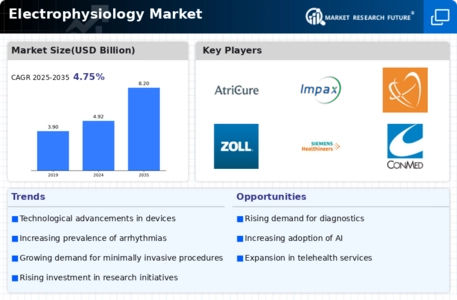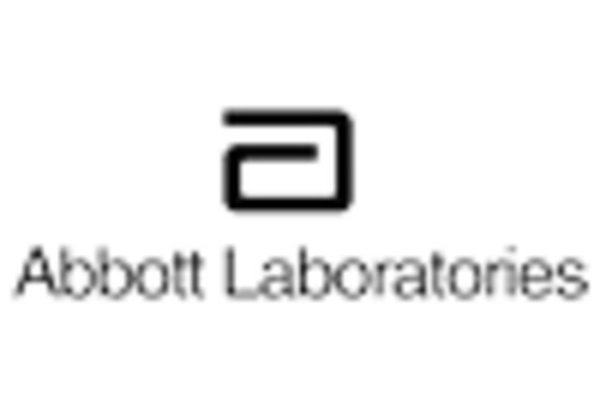Market Analysis
In-depth Analysis of Electrophysiology Market Industry Landscape
The demand, innovation, and accessibility of diagnostic and treatment technologies for cardiac electrophysiology are shaped by a multitude of variables that impact the dynamic healthcare ecosystem in which the electrophysiology market functions. Globally rising rates of cardiac arrhythmias and associated diseases are a major contributing factor. The increasing prevalence of arrhythmias due to ageing populations and lifestyle choices is driving up demand for sophisticated electrophysiological solutions, such as mapping systems and catheters, to meet the various demands of patients and medical professionals. Developments in electrophysiological technology are essential to market dynamics. New developments in navigational systems, mapping technology, and ablation procedures are constantly leading to the creation of more accurate and effective electrophysiological solutions. In response to these technological advancements, the market provides cutting-edge instruments that boost the precision of diagnoses, increase treatment results, and lessen the invasiveness of electrophysiological operations. This creates a competitive environment and accelerates the industry's expansion. Market dynamics are heavily influenced by standards compliance and regulatory issues. New electrophysiological technology clearance procedures are subject to stringent regulatory inspection to guarantee patient’s safety. Market participants' tactics are shaped by adherence to regulatory restrictions, which have an effect on product development, clinical trial procedures, and market entrance strategies. Within the healthcare environment, the reliability and dependability of electrophysiological solutions are enhanced by a strong regulatory framework. The reimbursement policies and healthcare spending are two economic elements that have a big impact on market dynamics. The acceptance and accessibility of these technologies are influenced by the affordability of electrophysiological procedures and the availability of reimbursement. In order to ensure more access to advanced electrophysiological treatment, market participants manage financial issues by creating cost-effective solutions and having talks to enhance payment regulations. Electrophysiology market dynamics are influenced by healthcare organizations collaborating with one another and by globalization. Global collaborations on R&D and best practices exchange promote a more globalized market where electrophysiological solutions are available and flexible beyond national boundaries. Globalization promotes knowledge sharing, increases access to electrophysiological technology globally, and leads to a more uniform approach to cardiac treatment. Market dynamics are influenced by environmental factors, such as energy efficiency and sustainability. Sustainability in the healthcare sector is demonstrated by the development of eco-friendly materials and energy-saving technology in electrophysiology systems. Market participants investigate options that complement more extensive initiatives to encourage environmental responsibility in medical procedures. The ability to plan for and respond to pandemics has become a crucial factor in market dynamics. The COVID-19 epidemic has altered the way that electrophysiological operations are delivered in healthcare. This has led to a surge in the need for novel approaches to address pandemic-related issues, such as telemedicine consultations, remote monitoring, and modifications to guarantee patient safety in medical emergencies. The rivalry between producers and healthcare providers is a major factor influencing market dynamics. Businesses work hard to set their electrophysiological solutions apart with novel features, standout features, and clinical effectiveness. This rivalry encourages the adoption of cutting-edge solutions and the use of best practices throughout the electrophysiology industry, which drives ongoing advancements in electrophysiological technology.
Market dynamics are being impacted by the deployment of data analytics and digital health technology. Personalised and effective electrophysiological care is facilitated by developments in data-driven decision-making, remote monitoring, and electroanatomical mapping. In response, the market integrates electrophysiological technology with digital health solutions to improve treatment results, expedite patient interaction, and streamline healthcare delivery.


















Leave a Comment